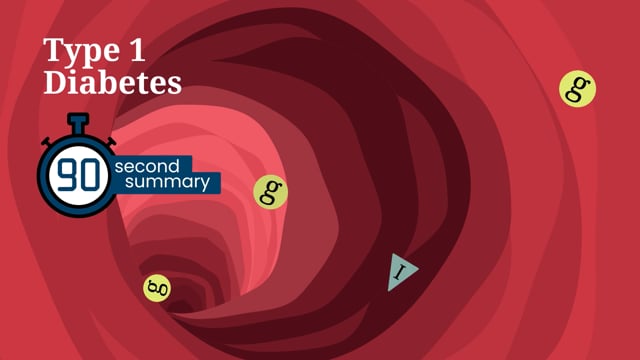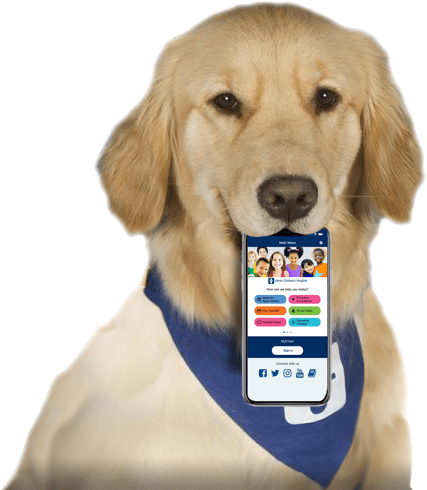Managing Blood Sugars When Your Child Has Type 1 Diabetes
Managing blood sugar means keeping your child’s blood sugar in the healthy range — not too high and not too low. Your care team may call this "diabetes control."
The blood sugar level is the amount of glucose in the blood. Glucose is a sugar that comes from the foods we eat, and it's also formed and stored inside the body. It's the main source of energy for the body’s cells, and is carried to each cell through the bloodstream.
Why Should Blood Sugars Be in the Healthy Range?
Keeping blood sugars in the healthy range will help your child have more energy and grow well. It will also prevent health problems in the future.
What Can Happen If Blood Sugars Are Too High or Too Low?
Even when you follow the care plan and check your child’s blood sugar carefully, your child can still have high or low blood sugars from time to time. For example, eating too much on a special holiday or exercising more or less than usual can change blood sugar levels.
When a person’s blood sugar gets too low, it is called hypoglycemia. This needs treatment right away. A rise in blood sugar is called hyperglycemia. Hyperglycemia that isn’t treated can turn into diabetic ketoacidosis, which also needs medical care right away. Ask your care team about these conditions and what to watch out for.
Keeping blood sugars in the healthy range helps your child now and in the future. Steady and healthy blood sugars today may make your child less likely to develop health problems during puberty and into adulthood.
Lean on your care team for support. They’ll help you boost your skills and confidence in managing your child’s diabetes.

90-Second Summary: Type 1 Diabetes
Learn the basics in 90 seconds.
What Can Affect Blood Sugar Levels?
Many things can affect blood sugars. Some are hard to control, like illness, stress, and homones. Others are things that you and your child can learn to control, such as food, medicine, and exercise. The care team will talk with you often about them.
- Food. The carbohydrates in food naturally raise blood sugar. So, the types and amounts of foods your child eats can make a difference. Your care team will give you meal and snack recommendations to help with this.
- Insulin.Diabetes medicines like insulin, which lowers the amount of sugar in the blood, affect blood sugar levels too. You’ll learn to balance it with the foods your child eats. Your care team will teach you about using insulin, and how and when to adjust it.
- Exercise. Keeping active is terrific for kids with type 1 diabetes. Exercise lowers blood sugars and keeps kids fit. Find out from your care team the best way for your child to stay active and keep their blood sugar levels as steady as possible.
Finding the right balance between food, medicine, and exercise may seem like a lot to juggle at first. You’ll get the hang of it.
How Are Blood Sugar Levels Measured?
Your child’s blood sugar levels will tell you how well the care plan is working. There are two ways to measure blood sugar:
- Daily blood sugars. These are the measurements you take throughout the day, typically using a glucose meter. If your child wears a continuous glucose monitor , you can see the blood sugar level on the display at any time.
- Blood sugars over the past few months. Every few months you’ll meet with the care team, and they’ll send your child for a blood test called glycosylated hemoglobin (hemoglobin A1c or HbA1c). The results will show how often your child’s blood glucose was in and out of the healthy range in the 2–3 months before the test.
At your child’s regular diabetes checkups, you’ll discuss blood sugar results with the care team, and they’ll update the care plan as needed.
How Can I Help Manage My Child’s Blood Sugar Levels?
Getting blood sugars in the healthy range can be a challenge at first. But in time, you and your child will take charge of diabetes together.
Here are some tips:
- Learn as much as you can about diabetes and your child’s care plan. You can ask the care team anything. They want to help you and are eager to answer your questions.
- Test your child’s blood and give medicines. Check blood sugar levels often. Make sure your child takes insulin or other diabetes medicines as prescribed.
- Follow the meal plan. Offer meals and snacks that fit into your child's meal plan, with an overall focus on giving lots of healthy choices.
- Promote exercise and movement. Encourage your child to have regular physical activity.
- Get regular checkups. Make sure your child gets regular checkups with the care team.
Creating healthy habits and routines with your child will help keep their diabetes in check. The effort you put in will help keep your child healthy.
Reviewed by: Cheryl Patterson, RD, LDN, CDCES
Date Reviewed: Sep 30, 2021
















